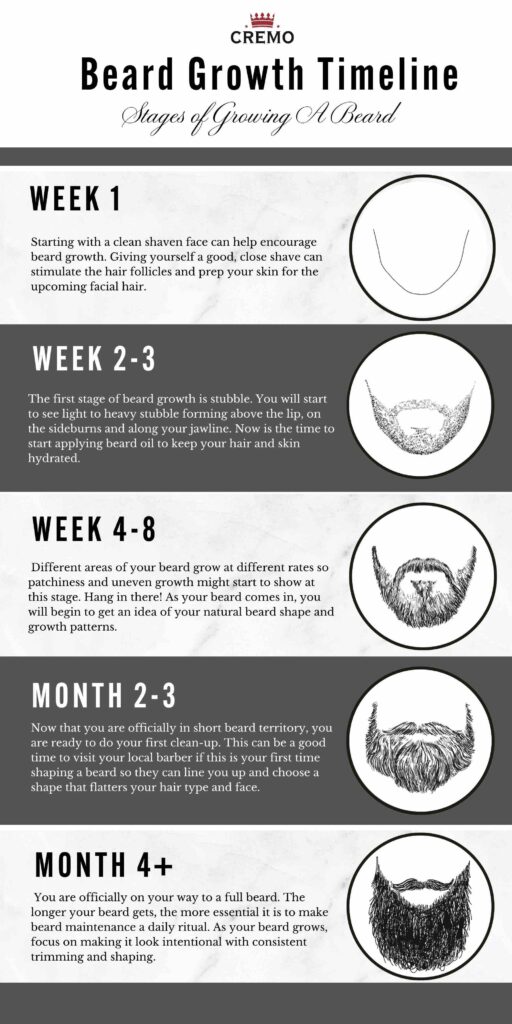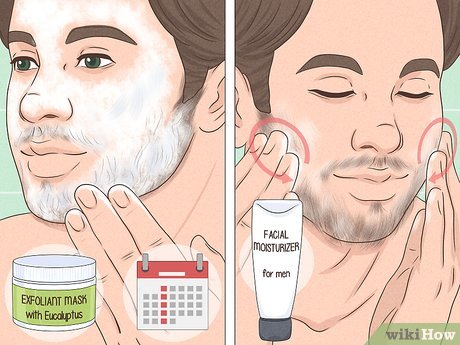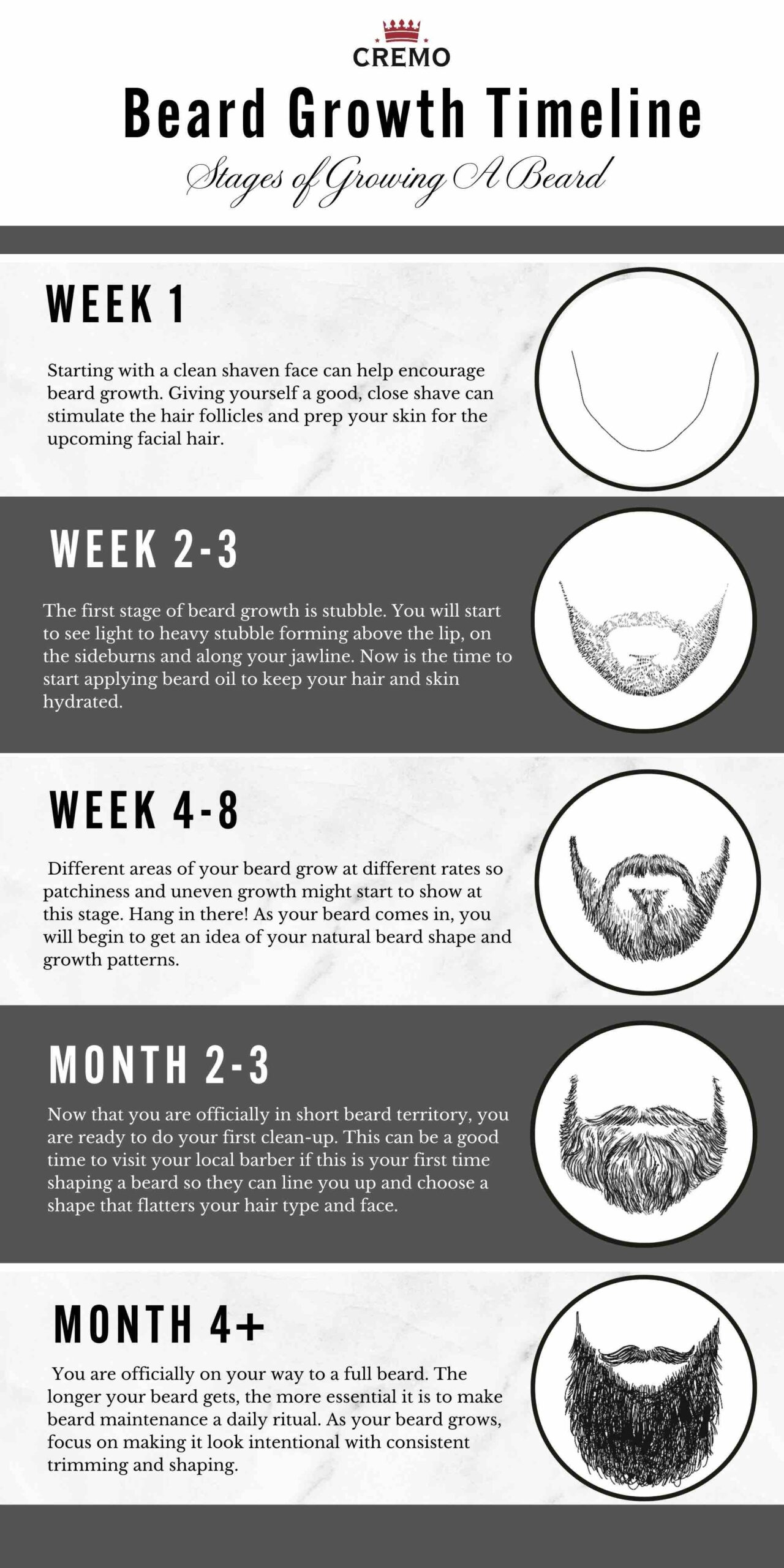If you’ve been looking to enhance your facial hair game and grow that envy-inducing beard or mustache, you’ve come to the right place. This article will provide you with a range of helpful tips and tricks to achieve the luscious facial hair you’ve always wanted. From grooming routines and dietary changes to natural remedies and lifestyle adjustments, we’ve got you covered. Get ready to embark on a grooming journey that is bound to turn heads and make you feel confident in your facial hair growth. So, grab your comb and let’s get started!
1. Diet and Nutrition
1.1 Eating a Balanced Diet
Eating a balanced diet is essential for overall health, and it can also positively impact the growth of your facial hair. Make sure your diet includes a variety of fruits, vegetables, whole grains, lean proteins, and healthy fats. These foods provide essential nutrients that support hair growth, such as vitamins, minerals, and antioxidants. Aim to include foods like spinach, eggs, salmon, nuts, sweet potatoes, and avocados in your meals to promote facial hair growth.
1.2 Protein-rich Foods
Protein is a crucial nutrient that plays a vital role in the production of keratin, the main structural component of hair. To encourage facial hair growth, incorporate protein-rich foods into your diet. Good sources of protein include lean meats, poultry, fish, beans, lentils, tofu, and Greek yogurt. By ensuring an adequate intake of protein, you can help nourish your hair follicles and support healthy facial hair growth.
1.3 Vitamins and Minerals
Certain vitamins and minerals are particularly beneficial for promoting facial hair growth. Vitamin A, found in foods like sweet potatoes and carrots, helps support the production of sebum, which moisturizes the hair and promotes healthy growth. Vitamin C, found in citrus fruits and bell peppers, aids in collagen production, which is important for hair strength. B vitamins, especially biotin, are known to support hair growth and can be found in foods like eggs, nuts, and whole grains. Additionally, minerals like zinc, selenium, and iron also play a role in hair growth, so include foods like oysters, pumpkin seeds, and lean red meats in your diet.
1.4 Staying Hydrated
Drinking enough water is essential for overall health, including hair growth. Staying hydrated helps maintain the optimal functioning of your hair follicles and keeps your facial hair nourished. Aim to drink at least eight glasses of water per day, and consider increasing your intake if you are physically active or live in a dry climate. Staying hydrated not only supports the growth of your facial hair but also promotes healthier-looking skin.
2. Healthy Lifestyle Habits
2.1 Regular Exercise
Engaging in regular exercise not only benefits your overall health but can also contribute to better hair growth. Exercise helps improve blood circulation throughout the body, including the hair follicles on your face. This increased blood flow delivers essential nutrients and oxygen to the hair follicles, promoting healthy hair growth. Aim for at least 30 minutes of moderate-intensity exercise, such as brisk walking, jogging, or cycling, most days of the week. Remember, a healthy body promotes healthy facial hair.
2.2 Managing Stress
Stress can have a negative impact on your overall health, including the growth of facial hair. When you experience high levels of stress, your body releases cortisol, a hormone that can interfere with the normal functioning of your hair follicles. Therefore, it is important to find healthy ways to manage stress. Consider incorporating stress-reduction techniques into your daily routine, such as meditation, deep breathing exercises, yoga, or engaging in hobbies that bring you joy. By effectively managing stress, you can create a more conducive environment for facial hair growth.
2.3 Getting Enough Sleep
Getting adequate sleep is essential for many aspects of your health, including hair growth. During sleep, your body repairs and regenerates cells, including those responsible for facial hair growth. Aim for 7-9 hours of quality sleep each night to ensure your body has enough time to rejuvenate. Establishing a regular sleep schedule and creating a relaxing bedtime routine can help improve the quality of your sleep. By prioritizing sleep, you are giving your body the opportunity to support facial hair growth.

3. Facial Massage and Exfoliation
3.1 Stimulating Blood Circulation
Facial massage can be a beneficial practice for promoting facial hair growth. Massaging your face using gentle circular motions helps stimulate blood circulation in the area, delivering vital nutrients to the hair follicles. You can use your fingertips or a facial massager to perform the massage. Make sure to be gentle and avoid applying too much pressure, as this can potentially damage the skin. Consider incorporating facial massage into your daily skincare routine for improved blood circulation and potential hair growth benefits.
3.2 Utilizing Beard Oils and Serums
Beard oils and serums are specially formulated products designed to nourish and moisturize both the skin and hair follicles of the face. These products typically contain a combination of carrier oils and essential oils that provide hydration and promote healthy hair growth. Apply a few drops of beard oil or serum to your fingertips and massage it into your beard and the skin underneath. This helps keep your facial hair healthy, soft, and hydrated, creating an optimal environment for growth.
3.3 Gentle Exfoliation to Promote Hair Growth
Exfoliating your face regularly can help remove dead skin cells and promote hair growth in follicles that may be clogged or obstructed. Use a gentle facial scrub or exfoliating brush to gently buff away the dead skin cells, allowing the hair follicles to function properly. Be cautious not to exfoliate too aggressively, as this can cause skin irritation. Aim to exfoliate your face once or twice a week to support facial hair growth.
4. Proper Beard Care
4.1 Regular Washing and Conditioning
Keeping your beard clean and well-conditioned is crucial for encouraging healthy hair growth. Use a mild, sulfate-free beard wash or shampoo to cleanse your beard regularly. Gently massage the product into your beard and rinse thoroughly with warm water. After washing, apply a beard conditioner or oil to keep your facial hair soft, manageable, and moisturized. Regular washing and conditioning prevent build-up, reduce itchiness, and provide a healthy environment for your facial hair to grow.
4.2 Avoiding Harsh Products
Using harsh hair products or styling tools on your beard can damage the hair follicles and hinder growth. Avoid hair products that contain alcohol, as they can dry out and strip the moisture from your beard. Opt for natural and gentle products specially formulated for facial hair. Additionally, try to limit the use of heated styling tools, such as hairdryers and straighteners, as they can cause damage to your facial hair. By choosing gentle products and minimizing excessive heat, you can support the health and growth of your beard.
4.3 Trimming and Shaping
Regular trimming and shaping of your beard can help maintain its appearance and promote healthy growth. Trimming removes split ends and encourages thicker, fuller growth. Invest in a quality beard trimmer or visit a professional barber for regular maintenance. When shaping your beard, consider your facial structure and personal style preferences. By keeping your beard well-groomed and styled, you can enhance its overall appearance and create a more even growth pattern.

5. Minoxidil (Rogaine)
5.1 Understanding Minoxidil
Minoxidil, commonly known by the brand name Rogaine, is an FDA-approved medication that has shown effectiveness in promoting hair growth. While initially developed for treating hair loss on the scalp, minoxidil can also be used on the face to stimulate facial hair growth. It is available in both foam and liquid forms and works by increasing blood flow to the hair follicles, prolonging the growth phase of hair, and promoting thicker and longer beard growth.
5.2 Application and Usage
When using minoxidil for facial hair growth, it is important to follow the instructions provided by your healthcare professional or the product packaging. Generally, you will need to apply minoxidil to the clean and dry skin of your face twice a day. Use the dropper or foam applicator to apply the product directly to the areas where you desire facial hair growth. Massage it gently into the skin to ensure even distribution. Consistency is key when using minoxidil, as it may take several months to see noticeable results.
5.3 Potential Side Effects
While minoxidil is generally safe to use, like any medication, it does carry some potential side effects. Common side effects may include skin irritation, dryness, redness, or itching. These side effects are typically mild and temporary. However, in some cases, individuals may experience more severe side effects, such as chest pain, dizziness, rapid heartbeat, or swelling of the face. If you notice any concerning side effects, discontinue use and consult with your healthcare professional.
6. Biotin Supplements
6.1 What is Biotin?
Biotin, also known as vitamin B7, is a water-soluble vitamin that plays a crucial role in the growth and maintenance of healthy hair, skin, and nails. It is naturally found in foods such as eggs, nuts, and whole grains. However, some individuals may have difficulty obtaining adequate biotin through diet alone. In such cases, biotin supplements can be taken to support hair growth, including facial hair.
6.2 Benefits and Effectiveness
Biotin supplements can be beneficial for promoting facial hair growth, especially for individuals with biotin deficiencies. Biotin helps strengthen the hair follicles and promotes the production of keratin, the protein that makes up the structure of hair. However, it is important to note that biotin alone may not guarantee significant facial hair growth, especially if other factors such as genetics or hormone imbalances are hindering growth. Consult with a healthcare professional before starting any new dietary supplement.
6.3 Recommended Dosage
The recommended dosage of biotin supplements for promoting facial hair growth may vary depending on factors such as age, sex, and overall health. Generally, a daily dosage of 2.5-5 mg (2500-5000 mcg) of biotin is considered safe and sufficient for most individuals. However, it is always best to consult with a healthcare professional before starting any new supplement regimen, as they can provide personalized recommendations based on your specific needs and health conditions.

7. Micro-Needling
7.1 The Science Behind Micro-Needling
Micro-needling, also known as collagen induction therapy, is a procedure that involves using a device with small needles to create tiny punctures in the skin. These micro-injuries stimulate the body’s natural healing response, resulting in increased collagen production and blood flow to the treated area. In the context of facial hair growth, micro-needling can potentially promote the growth of new hair follicles and enhance the overall density of facial hair.
7.2 Procedure and Safety
Micro-needling for facial hair growth is typically performed by a trained professional, such as a dermatologist or aesthetician. The procedure begins with the application of a topical numbing cream to minimize any discomfort. The micro-needling device is then gently rolled or stamped over the targeted areas of the face. The depth of the needles can be adjusted based on individual needs and goals. While the procedure may cause temporary redness and mild irritation, it is generally safe when performed by a qualified professional.
7.3 Expected Results
Micro-needling for facial hair growth is still a relatively new area of research, and individual results may vary. Some individuals may experience noticeable improvements in facial hair growth, while others may see minimal or no changes. It is important to have realistic expectations and understand that multiple treatment sessions may be necessary to achieve desired results. Consult with a qualified professional to assess whether micro-needling is a suitable option for you and to determine an appropriate treatment plan.
8. Hormonal Imbalance Evaluation
8.1 Recognizing the Importance of Hormones
Hormones play a significant role in hair growth, including facial hair. Testosterone, a male hormone, is responsible for stimulating the growth of facial hair. However, imbalances or abnormalities in hormone levels can hinder facial hair growth. It is essential to recognize the importance of hormones in the context of facial hair growth and to consider evaluating your hormone levels if you are experiencing difficulties in growing facial hair.
8.2 Consulting with a Healthcare Professional
If you believe that hormonal imbalances may be affecting your facial hair growth, it is essential to consult with a healthcare professional, such as an endocrinologist or urologist. They can evaluate your symptoms, perform tests to assess your hormone levels, and provide appropriate guidance and treatment options. Hormonal imbalances can be caused by various factors, and a healthcare professional can help determine the underlying cause and develop a tailored treatment plan if necessary.
8.3 Addressing Potential Imbalances
If a hormonal imbalance is identified as a contributing factor to slow or sparse facial hair growth, treatment options may be available. These options can include hormone replacement therapy, lifestyle modifications, or medications to target specific hormonal imbalances. The most appropriate course of action will depend on the specific hormone levels and underlying causes identified during evaluation. It is crucial to work closely with your healthcare professional to address any potential hormonal imbalances effectively.

9. Patience and Persistence
9.1 Understanding Hair Growth Cycles
Hair growth, including facial hair growth, occurs in cycles that consist of growth (anagen), resting (telogen), and shedding (catagen) phases. Each hair follicle goes through these cycles independently, which is why facial hair may not grow evenly or at the same rate. It is important to understand that hair growth takes time and patience. Some follicles may be in the growth phase, while others are in the resting phase. Consistency and persistence are key when trying to grow facial hair.
9.2 Maintaining Consistency
Consistency in your grooming routine and lifestyle habits can significantly impact facial hair growth. Stick to a regular routine of proper beard care, including washing, conditioning, and moisturizing. Maintain a balanced diet, exercise regularly, manage stress, and prioritize sleep consistently. Consistency in your efforts will create a conducive environment for healthy facial hair growth and help you achieve your desired results.
9.3 Celebrating Progress
Facial hair growth is a journey that requires time and patience. Rather than solely focusing on the end result, be sure to celebrate the progress you make along the way. Take before and after pictures to compare your beard growth over time. Notice subtle changes in density, thickness, and overall appearance. Recognize that each hair follicle that grows is a step closer to your desired beard. By celebrating progress, you can maintain motivation and appreciation for the journey of growing facial hair.
10. Natural Remedies and Traditional Methods
10.1 Herbal Supplements
Certain herbal supplements are believed to support healthy hair growth and can be considered in conjunction with other methods. Saw palmetto, pygeum, and stinging nettle are herbs that are commonly used for hair-related concerns, including facial hair growth. These herbs may help balance hormones and stimulate hair follicles. However, it is important to consult with a healthcare professional before starting any herbal supplements to ensure safety and proper dosing.
10.2 Castor Oil Application
Castor oil is a popular natural remedy for promoting hair growth. It contains ricinoleic acid and omega-6 fatty acids, which nourish the hair follicles and promote hair thickness and density. To use castor oil for facial hair growth, apply a small amount to your fingertips and massage it into the desired areas of your face. Leave the oil on for a few hours or overnight, then rinse thoroughly with warm water. Repeat this process a few times a week to potentially see improvements in facial hair growth.
10.3 Traditional Techniques from Different Cultures
Throughout history, various cultures have developed traditional techniques for promoting facial hair growth. These techniques may involve the use of specific herbs, oils, or massage techniques. For example, Indian traditions include applying a paste of fenugreek seeds or onion juice to the face. In Middle Eastern cultures, the use of sesame oil or black seed oil is believed to enhance facial hair growth. Exploring these traditional techniques can provide additional options for individuals looking to grow their facial hair, but it is important to approach them with caution and seek guidance from knowledgeable sources.
Growing facial hair is a unique journey for each individual. By implementing a combination of proper diet and nutrition, healthy lifestyle habits, facial massage and exfoliation, proper beard care, and exploring additional methods such as minoxidil, biotin supplements, micro-needling, hormonal imbalance evaluation, patience, and natural remedies, you can maximize your potential for healthy and robust facial hair growth. Remember to consult with healthcare professionals when necessary, maintain consistency in your efforts, and celebrate the progress you make along the way. Embrace the journey and enjoy the process of growing and maintaining your facial hair.

